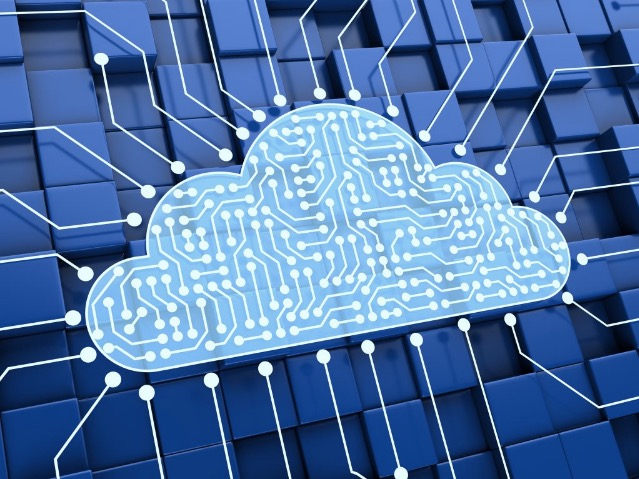
The COVID-19 pandemic forced many businesses to accelerate their technology plans by shifting in-person services to virtual offerings. What many CIOs considered initially to be five-year modernization plans were implemented in a fraction of their original timelines—in months or even weeks. This shift has demonstrated that the legacy applications that companies often rely on are problematic in this new era.
Many are turning to application modernization to address the issues caused by overtaxed legacy applications. This process migrates existing applications and software to newer platforms. An example might include a piece of legacy accounting software being updated and uploaded to a cloud platform. The updated application gives employees greater access to the software in remote locations and likely results in improved performance and functionality.
The core benefits of modernizing legacy applications include increased productivity, future-proofing operations, and improved customer experience. Companies tackling modernization also avoid common pitfalls of legacy apps, such as incompatibility due to age, data bottlenecks, and expenses from constant maintenance.
Fortunately, there are varied approaches to updating legacy applications to suit your company’s needs and the rapidly evolving tech landscape.
Learn more: Application and infrastructure modernization
The need for application modernization
Legacy applications can create more problems for companies than they solve, but they are frequently core pieces of a company’s technology suite. That said, it’s understandable that most companies are unwilling to abandon legacy software entirely and upgrade to systems that better suit their needs. These pieces of software are inextricably tangled in a company’s day-to-day operations. Additionally, rebuilding or upgrading them can be costly and many companies lack the IT resources to accomplish the task.
However, the drawbacks of relying on aging legacy apps are compounding. Over time, service speed slows, and more resources are dedicated to maintenance and troubleshooting. As vendors push their latest products to the market, support for aging apps diminishes or disappears. Perhaps most limiting is the fact that many legacy applications don’t work on mobile devices and are not cloud compatible.
Application modernization is an excellent solution for organizations dealing with older legacy software. They do not have to “rip out” existing apps and start from scratch. Instead, companies can pick an approach that works for them.
Read this case study: Application development enables your business to grow
Approaches to application modernization
Even a few years ago, the options for enterprises seeking to update their applications were somewhat limited. Companies had to choose between abandoning legacy software for newer applications or investing valuable resources in maintaining aging systems. Recent advances in technology driving application modernization include:
- Cloud-native apps: Applications that “live” on the Cloud are easy to access and mobile-ready.
- Containerization: This virtual “box” that hosts applications across cloud-based environments reduces the need to rely on onsite infrastructure.
- Application integration: Fast API-based code allows different applications to work together and automate.
- DevOps/SecOps: Speed up the time to market by removing barriers between department silos while keeping security a priority.
- Data insight and AI/ML: Leverage real-time data to provide insights and boost operational efficiency.
Patterns for modernizing applications:
- Lift and shift: This process (also known as “rehosting”) migrates existing applications from a legacy environment into a newer architecture. The key benefit to this pattern is that it allows companies to transfer the application with minimal changes to the application’s code.
- Refactoring: Commonly known as “rewriting,” “restructuring,” or “rebuilding,” this method involves reworking the application’s base code to run in a cloud environment. Developers break down the application into microservices, which work well with other cloud-native tools like containers and container orchestration.
- Replatforming: This strategy is a midpoint between refactoring and lift and shift. No significant code changes are needed, but it updates legacy apps to function on the Cloud by upgrading the application’s backend.
Download this e-book: CIO field guide: Cloud assessment services
Crucial systems for application modernization
Application modernization allows businesses to reduce their dependence on physical infrastructure (such as onsite servers) and instead shifts to a more flexible, cloud-first model that enables IT managers to focus on innovation rather than maintaining older systems. It also gives companies a competitive edge as they become more responsive to market trends.
The foundational tools for developing and modernizing applications are:
- Cloud computing: Application modernization is essentially the process of bringing legacy apps onto the Cloud. Cloud environments take different forms, such as private clouds, cloud platforms, or hybrid models. Microsoft Azure, for example, is a cloud-based data recovery system that replaces traditional legacy apps that serve a similar function.
- Containers: These tools function exceptionally well in hybrid or multi-cloud environments. They are a cloud-first technique for packaging and operating applications across the Cloud. Containers allow for greater scalability, portability, and efficiency for core software.
- Microservices: Microservices break down codebase from a single monolith into many components and spread them across the Cloud. Thousands of chunks of code work in unison, but they can also be manipulated individually for quick updates, integration, and deployment.
- Orchestration and automation: Software orchestration allows IT teams to manage complex workflows by utilizing microservices, containers, and other cloud tools through automation. Furthermore, this automation allows various departments across a company—development, operations, security—to stay efficient. Lastly, orchestration makes it much easier to scale modernized apps and update components on a rolling basis.
Read more: The evolution of modern computer: Serverless solutions versus containers
Future-proof your business with expert advice from OnX
Application modernization techniques are a powerful way to keep a business competitive. OnX’s experts have guided organizations of all sizes through the application modernization process.
OnX’s fully managed solutions are time-saving solutions that allow our clients to develop a modernization roadmap, offload maintenance, network oversight, and other responsibilities to our team of modernization technicians. Free up company time and resources to focus on what you do best—innovation.
Get in touch with OnX today to learn how we can guide you through the application modernization journey.















